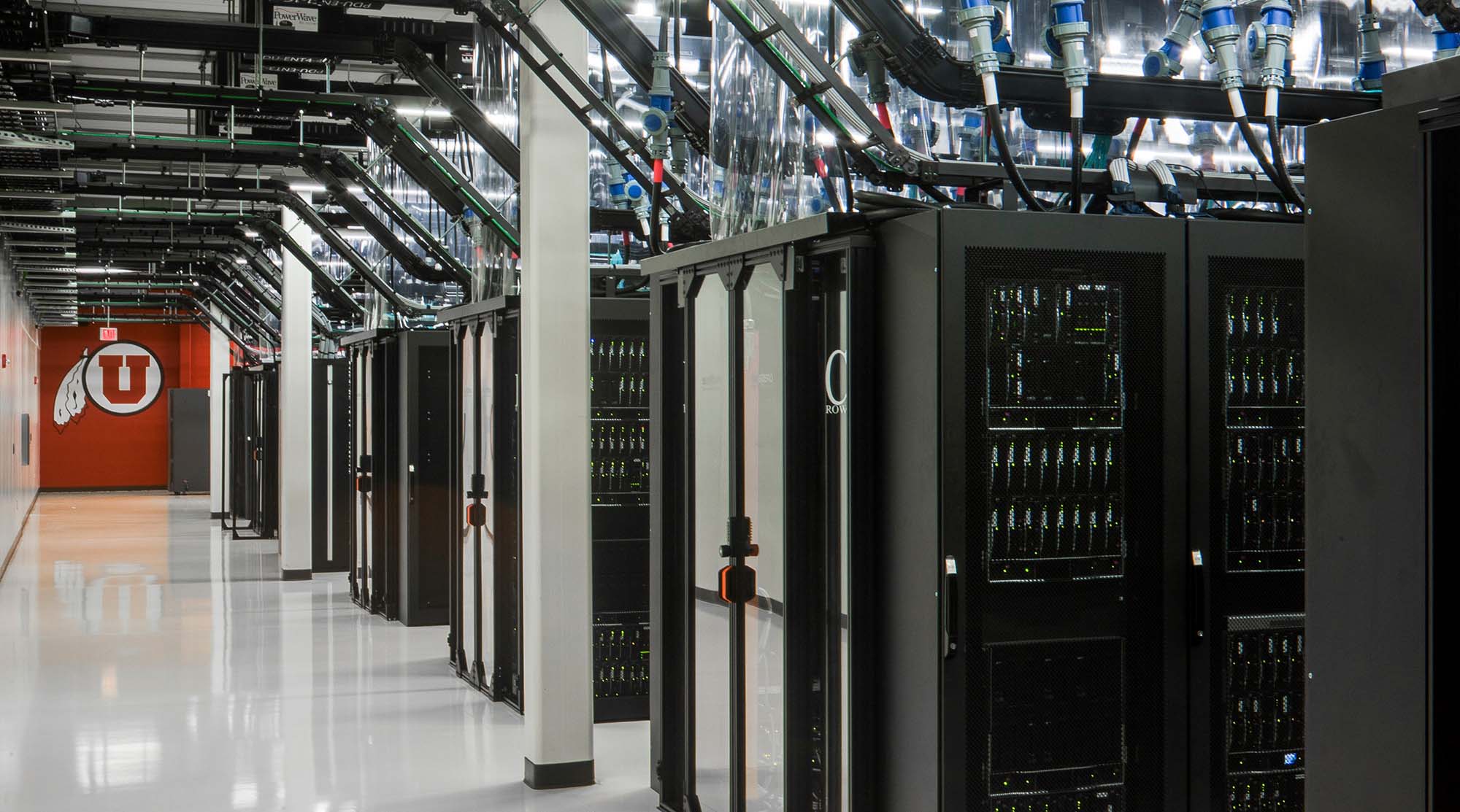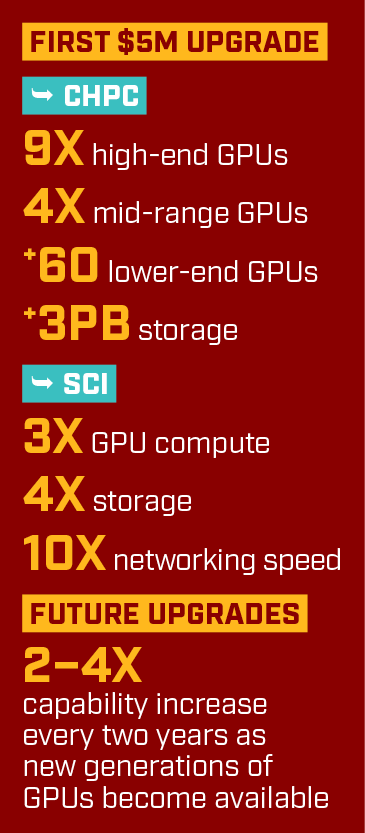
One-U RAI Supports Growing Cyberinfrastructure Needs
The One-U Responsible Artificial Intelligence Initiative (RAI) will acquire, deploy, and operate advanced AI cyberinfrastructure to leverage state-of-the-art AI technologies and support AI researchers and students across the state.The University of Utah has a rich history of innovation, exemplified by its early involvement in the ARPANET—the precursor to the modern Internet—and in creating the technology that powered companies such as Adobe, Pixar, Silicon Graphics, and Evans and Sutherland. This pioneering spirit continues to drive technological advancements across the state and positions Utah as a leader in the digital age.
Now, researchers are increasingly turning to AI to spur such discoveries. “There is an urgent need to establish and operate an advanced cyberinfrastructure ecosystem for AI, the technology of the future, across the state,” said Manish Parashar, director of One-U RAI and the Scientific Computing and Imaging (SCI) Institute, which houses the Center for High Performance Computing (CHPC). This ecosystem, Parashar explained, must integrate computing, storage, networking, and support services for Utah’s researchers, entrepreneurs, practitioners, and educators. “By acting swiftly, we can open new avenues for advancement in developing and using AI across all fields and disciplines to drive research, spark innovation, and catalyze economic development and leadership,” Parashar said.
 One-U RAI will invest in providing widely accessible advanced cyberinfrastructure resources and services critical for driving AI research and development. Specifically, the initiative will expand CHPC, prioritizing the addition of data center capacity, including the necessary modifications for power and cooling, the hiring of personnel as needed, and scaling-up its operations as a regional resource. “The SCI Institute and CHPC bring over three decades of experience in designing, deploying, and operating cyberinfrastructure both locally and nationally, and can host the advanced cyberinfrastructure ecosystem for AI,” said Parashar, a leader in developing AI and computing infrastructures. He’s the former office director of the National Science Foundation’s Office of Advanced Cyberinfrastructure and co-chair of the National Artificial Intelligence Research Resource Task Force.
One-U RAI will invest in providing widely accessible advanced cyberinfrastructure resources and services critical for driving AI research and development. Specifically, the initiative will expand CHPC, prioritizing the addition of data center capacity, including the necessary modifications for power and cooling, the hiring of personnel as needed, and scaling-up its operations as a regional resource. “The SCI Institute and CHPC bring over three decades of experience in designing, deploying, and operating cyberinfrastructure both locally and nationally, and can host the advanced cyberinfrastructure ecosystem for AI,” said Parashar, a leader in developing AI and computing infrastructures. He’s the former office director of the National Science Foundation’s Office of Advanced Cyberinfrastructure and co-chair of the National Artificial Intelligence Research Resource Task Force.
Currently, the U serves the computing and data needs of researchers and students at institutions across the state and is recognized as a national leader in research computing and data, with key roles in multiple national cyberinfrastructure projects such as the National Data Platform. Starting in 2025, One-U RAI cyberinfrastructure investments will significantly increase AI-ready computing and data capabilities while also expanding expertise and improving onboarding services.
One-U RAI has dedicated $15 million to advance cyberinfrastructure and is exploring additional federal and state funding. The current investments will be spread over three $5 million installments, the first of which will focus on replacing aging infrastructure and adding computing and storage capacity at SCI and CHPC. Specifically, the immediate investment will increase storage at CHPC by almost three petabytes (3,000 terabytes) and will add more than 175 graphics processing units (GPUs), which are the processors that allow for the simultaneous calculations necessary for AI research.
“These investments in CHPC will drive breakthroughs that benefit the state and beyond,” Parashar said.
This first equipment installment at CHPC will significantly increase current “compute,” or computing power. It entails adding interactive GPU nodes to support development of new models and real-time interaction with model results, and expanding high-end GPUs by nine times and mid-range GPUs by four times. Sixty lower-end GPUs will also be added for activities such as course support. These improvements will bolster various research and education applications, from predicting 3D molecular structures to detecting abnormalities in medical images to forecasting geological hazard events. The addition of low- to high-range GPUs will allow researchers to optimize their use of computing resources to match their specific needs.
At SCI, the initial investment is expected to triple the current GPU compute, quadruple the storage, increase networking speeds tenfold, and support equipment requests of incoming One-U RAI faculty.
Future equipment investments are projected to add newer generations of GPUs as they are released to continue to expand computing resources by two to four times every two years.
Beyond equipment, the investments will also allow CHPC to hire six staff to support One-U RAI, security and privacy compliance, data backups and archiving, network infrastructure, cloud and hybrid workflows, and more. In addition, four SCI staff members will be added to support research software, IT, and communications.
Together with state leadership, CHPC is working to support Utah’s research computing and data infrastructure. This combined investment will create a holistic cyberinfrastructure to serve the needs of academic institutions and industry partners across the Beehive State. It will provide essential capabilities for Utah’s researchers and developers to continue to explore new technologies and paradigms of translational AI.
This article initially appeared in One-U RAI’s 2023–2024 Annual Report, published in December 2024.
Banner image of CHPC by Paul Richer / RICHER IMAGES
